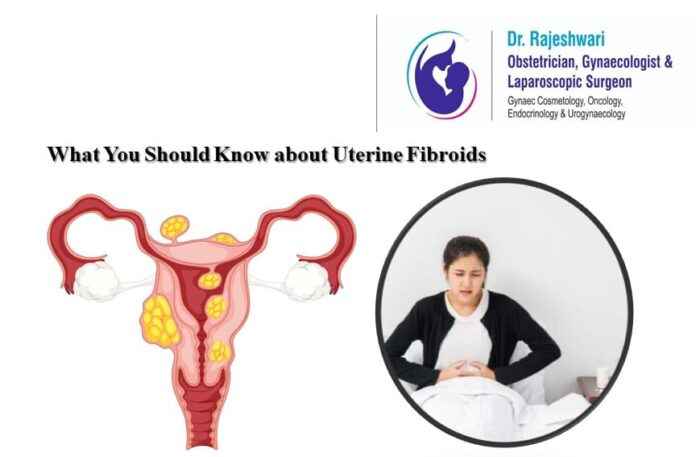Uterine fibroids are abnormal growths or masses (non-cancerous growth) that develop in a woman’s uterus mostly during childbearing years. Uterine fibroids are also known as myomas (leiomyomas). With uterine fibroids, the risk of uterine cancer is almost nil.
The size of fibroids may range from very small undetectable to bulky masses that are large enough to enlarge the uterus and alter its shape. A woman can have one, two or many fibroids together. Multiple fibroids can expand and cause problems. The Fibroids that develop during pregnancy, usually disappear or shrink after pregnancy.
Uterine fibroids often go undetected in many women for several years as they often do not cause symptoms. However, in some women, fibroids can grow large and cause severe symptoms including irregular menses, heavy periods, abdominal pain.
Fibroid specialist in Hyderabad believes that fibroids develop from myometrium (smooth muscle tissue). Repeated cell division and growth form an abnormal mass which is different from nearby cells and tissues.
What are the symptoms of Uterine Fibroids?
Uterine fibroids do not cause any symptoms in many women. However, symptoms if present may be due to the number, size and location of fibroids. Some of the common signs and symptoms of uterine fibroids in some women include the following:
- Heavy menstrual bleeding
- Menstrual periods lasting more than a week
- Backache or leg pains
- Constipation
- Difficulty emptying the bladder
- Frequent urination
- Pelvic pressure or pain
A fibroid does not cause acute pain when it begins to die due to a cut in blood supply.
Types of Fibroids based on their location
- Intramural fibroids – This type of fibroids grow within the muscular wall of the uterus.
- Submucosal fibroids – This type of fibroids grow into the uterine cavity.
- Subserosal Fibroids – This type of fibroids grow outside the uterus.
Causes of Uterine Fibroids
Though the exact cause of uterine fibroids is unknown, there are some factors that can increase the risk of developing uterine fibroids in women during their reproductive period.
Changes in chromosomes and DNA – genetic changes may cause abnormalities in uterine muscle cells
Estrogen and progesterone hormones stimulate the growth of uterine fibroids as the number of both these hormonal receptors are more on fibroids. This is the reason why fibroids tend to shrink after menopause owing to lower levels of estrogen and progesterone hormones.
Extracellular matrix and insulin-like-growth factors may also affect fibroid growth.
What are the complications associated with Fibroids?
Apart from discomfort, pain and menstrual abnormalities, uterine fibroids do not cause any significant damage. However, due to heavy menses (blood loss), some women may develop symptoms – such as fatigue due to anaemia. Submucosal fibroids can cause infertility issues and pregnancy loss. Preterm delivery, foetal growth retardation and placental abruption are the other pregnancy-related complications of fibroids.
Bottom Line
Best gynaecologist for fibroids usually approaches with a wait and watch strategy to deal with uterine fibroids as the behaviour and growth of most of the fibroids vary. Some uterine fibroids may grow rapidly and in a few other cases, the growth spurts, but in most of the cases, fibroids grow slowly or may remain the same size for long. Some may shrink on their own.
Read More – Which is the Best Treatment Option for Uterine Fibroids…
Dr Rajeshwari Reddy
Fibroid Specialist in Hyderabad (Best gynaecologist for fibroids)




